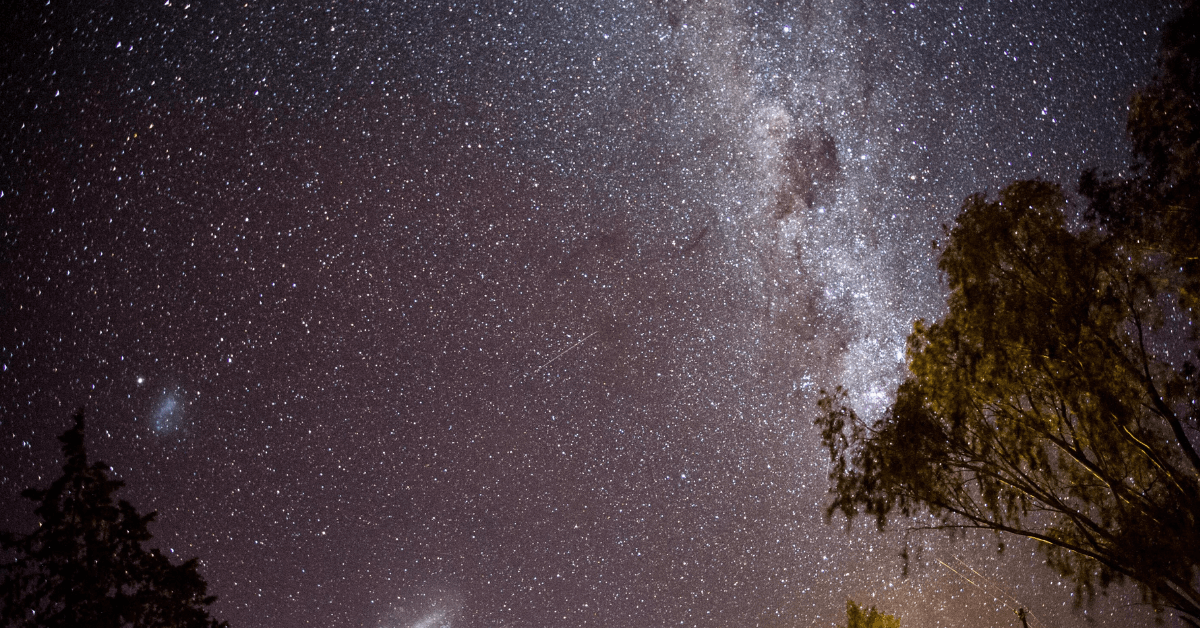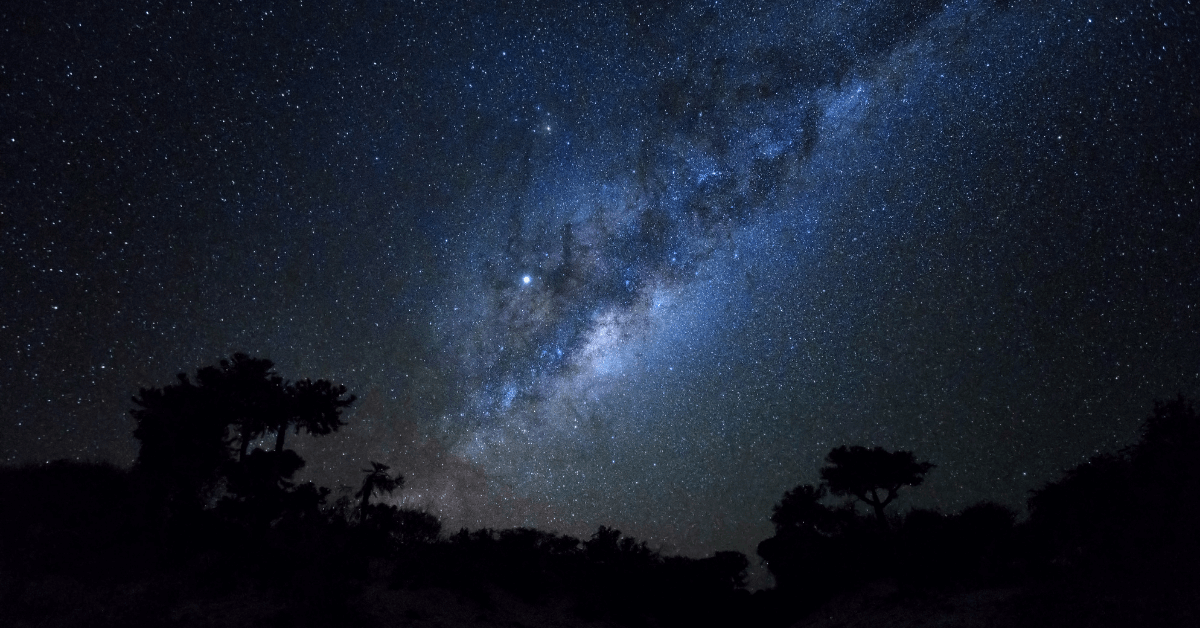The Mpumalanga countryside offers incredible stargazing conditions for those looking to draw inspiration from, or simply explore, the night skies. At Doornkop Fish & Wildlife Reserve, a dark sky slowly takes the place of golden-lit dusk. The nightlife suddenly comes alive and, as one stands on the patio with refreshment in hand, the emotional call of a black-backed jackal rings out and a symphony of stridulating beetles chorus into the night. The stage is set for a spectacular evening of stargazing in Mpumalanga.
The first thing to consider when making the decision to watch the stars is centred on selecting the right location. Doornkop Fish & Wildlife Reserve is located deep in the heart of the Mpumalanga countryside, and, aside from the limited twinkling of lights from a scattering of chalets along the waterways, no other light illuminates the sky above. The nearest large city to Doornkop is Middelburg, which is 110km away. This remote holiday destination is thus left undisturbed by the bustling noise of the city, and even better, its skies are not affected by the luminous city lights. This ensures minimal influence over the stars throughout the evening.

While the bright lights of ever-humming cities limit our chances to explore the awe-inspiring night skies, the lunar cycle also greatly affects night clarity. The full moon casts bright light, which often makes it unnecessary to walk around outdoors with a night light of sorts. Just as light pollution from cities washes out the faint light of stars, so too does the full moon. The best stargazing opportunities in Mpumalanga are during a new moon when the moon is not in the sky at night. The night skies can still be enjoyed during other phases of the lunar cycle, however, it can weaken the intensity of stars nearer to the full moon it is in its cycle.
Further to selecting a remote location, a number of weather conditions should be met to ensure the best possible starry skies for stargazing. South Africa is well-known to experience most of its rain during the summer months, and cloud cover is no good, so it is best to travel to the region during the dry winter months when there is minimal cloud cover. Stargazing on a clear night does not guarantee the best conditions, however. Other factors, including the clarity of the sky (no dust or humidity interference), limited wind and a term referred to as ‘seeing’ (which refers to the stars not shimmering) can also determine the quality of your stargazing experience.

Doornkop Fish & Wildlife Reserve, located in Mpumalanga, South Africa, forms part of the southern hemisphere and thus the southern skies. The Astronomical Society of Southern Africa, or ASSA as it is commonly referred to, set out to quantify the best examples of phenomena in our night skies. Aptly named ‘the Big 5 of the African Skies’, the bucket-list consists of 1. the Coal Sack, a dark nebula, 2. Carina Nebula, a bright nebula, 3. the Southern Pleiades, an open cluster, 4. Omega Centauri, a globular cluster, and 5. the Milky Way, a prime example of a galaxy. These five celestial bodies showcase the best examples of the southern hemispheres night skies and can be seen while stargazing in Mpumalanga.
Armed with some titbits of information regarding stargazing, it is highly recommended to try this experience at least once in one’s lifetime. Journey to Doornkop Fish & Wildlife Reserve and ask the family to join in for an evening under a deep sky; dress warmly, unfurl a picnic blanket and lie on the soft lawns of the Resort while gazing up at the marvels of our African skies.
Why not commemorate your first stargazing experience by making a DIY star map? Find out how with the help of Under Lucky Stars, here.
